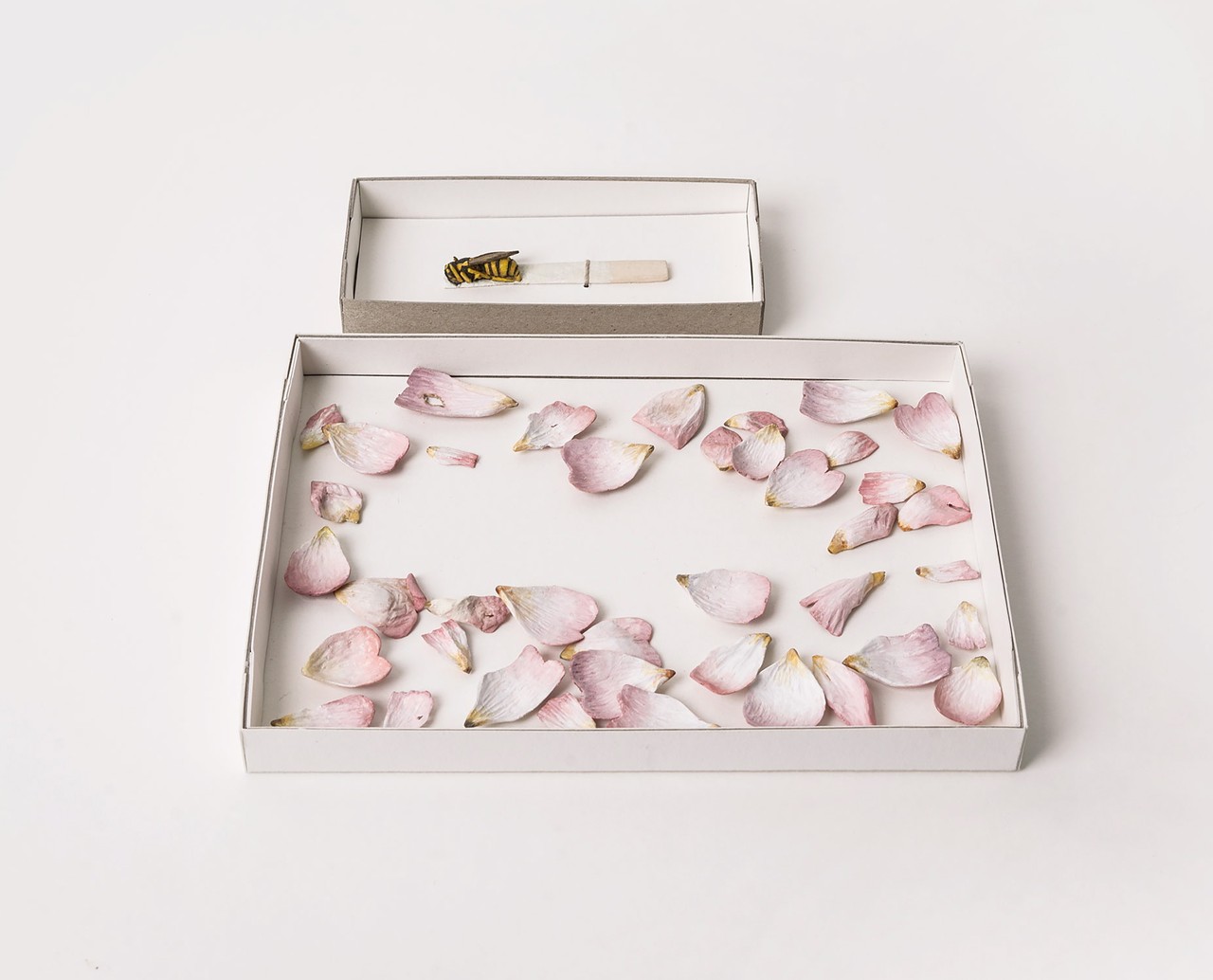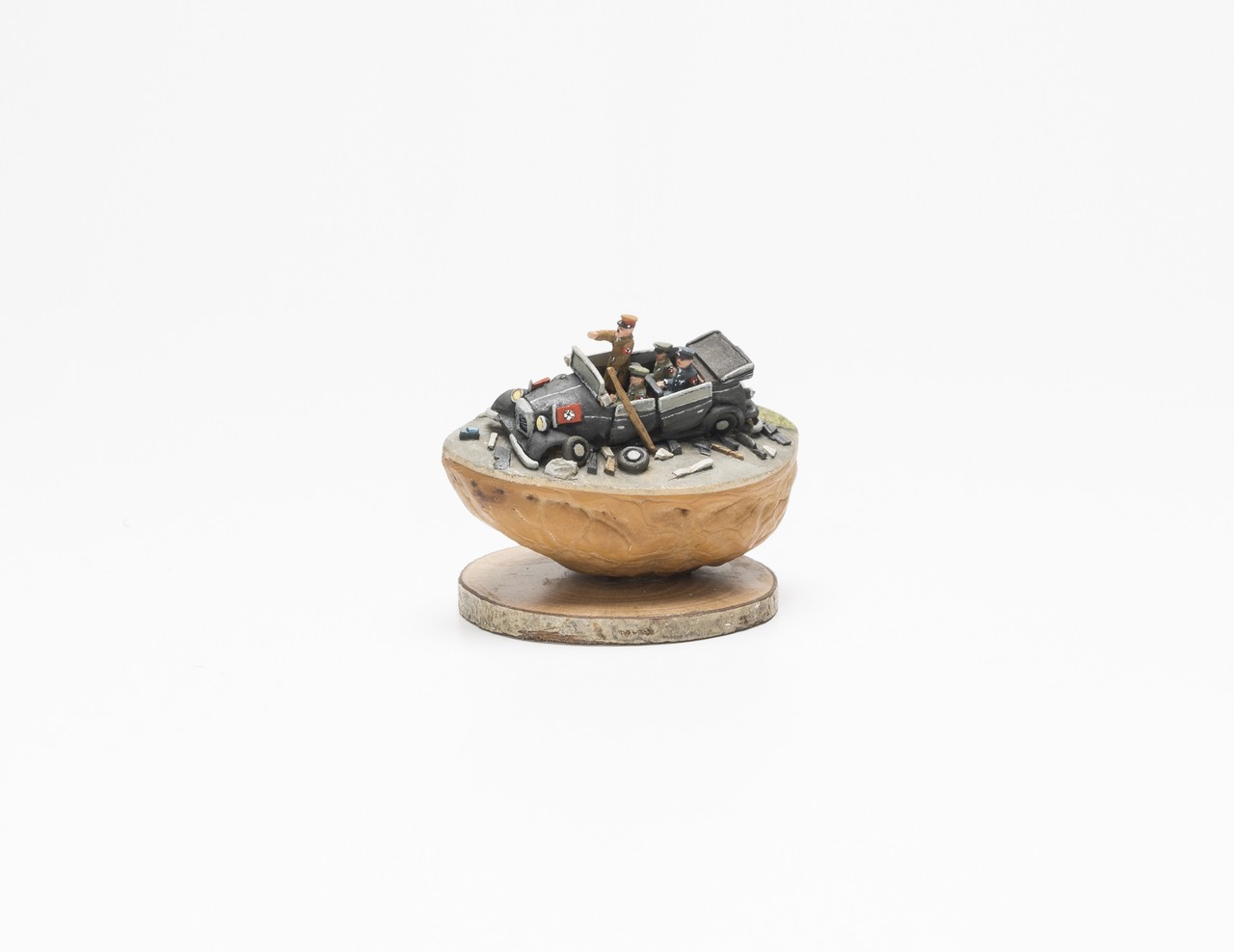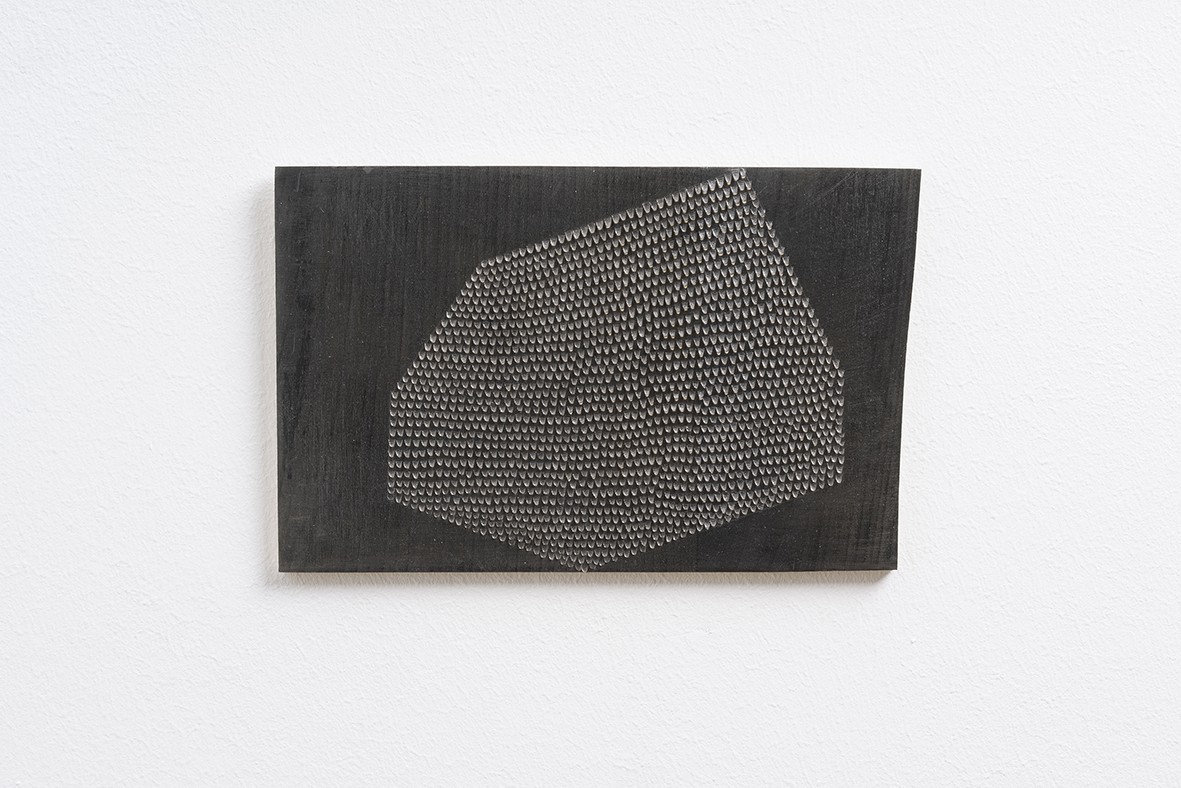PETER SAUERER and TRUDE FRIEDRICH
Antoniusfeuer
01 Dec 2017 - 06 Jan 2018
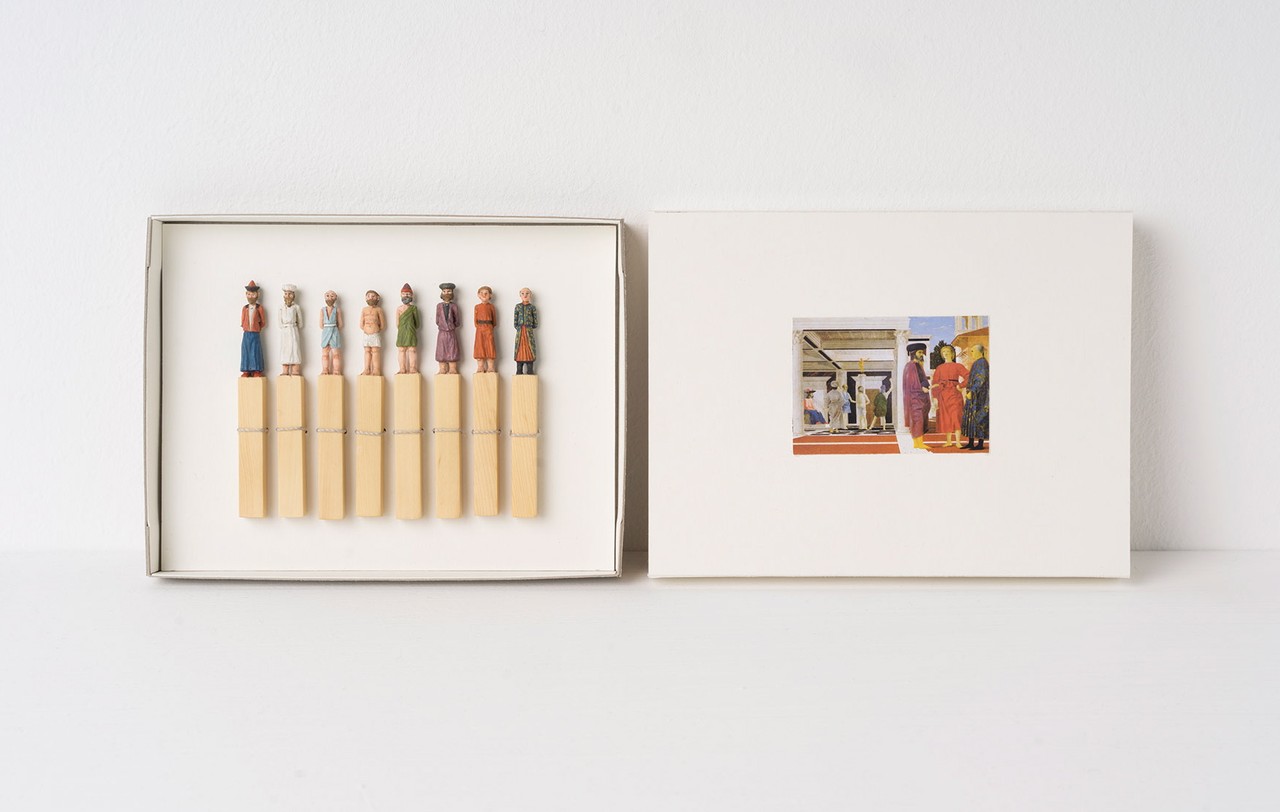
PETER SAUERER
Geisselung Christi (The Flagellation of Christ)
2017
Carved and painted boxwood, paper
12,3 x 9,3 x 1,3 cm
Geisselung Christi (The Flagellation of Christ)
2017
Carved and painted boxwood, paper
12,3 x 9,3 x 1,3 cm
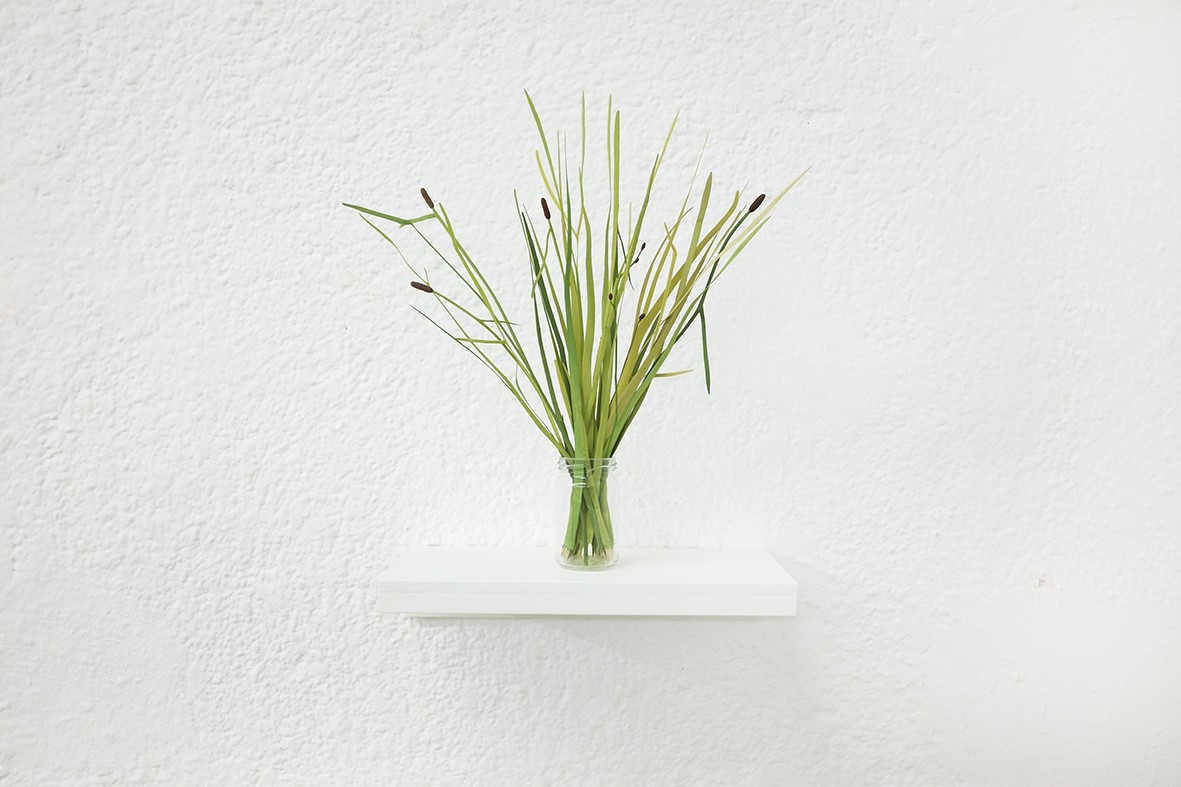
TRUDE FRIEDRICH
Grasschnitt (Grass Cut)
2015
Carved and painted hazelwood
37 parts, approx. 0,5 x 28 x 0,1 cm each
Grasschnitt (Grass Cut)
2015
Carved and painted hazelwood
37 parts, approx. 0,5 x 28 x 0,1 cm each
The inexhaustible source material from which Peter Sauerer (*1958) departs is basically world history in all its diverse manifestations. His object boxes display an assembly of meticulously carved and colorfully painted wooden figures, no larger than 2-3 cm, which refer to a decisive historical, political or cultural moment, captured by image of sometimes iconic value. Press photos, film posters, and artworks provide Sauerer ́s subject material. With an unmatched sensitivity for details, Sauerer crafts a set of figures which seem to playfully invite the spectator to recreate the original scene, which is depicted on the lid. What on a first glance appears as cute, proves to be at least thought provoking. The assassination of John F. Kennedy is represented through a cast of minute characters, reproduced with great care and in precise correspondance with the original protagonist. Firmly embedded in collective memory, one for instance instantaneously recalls the gruesome kidnapping of Gladbeck, and private reunions of Adolf Hitler with friends in his mountain refuge Bergdorf as well as the famous „Flagellation of Christ“ painted by Italian master Piero della Francesca. However, Sauerer ́s cabinet of figures is presented in stiff postures that show no relationship to the scene they arte drawn from: only the wardrobe proves to be a distinctive trait, indicative of a role. No sign in their posture reveals the difference between victim and offender. The contrast between the dramatic background action and the detached stance of the actors is disturbing and seems to reflect our own passive and removed attitude regarding the events surrounding us.
Trude Friedrich ́s (*1955) works, too, are handcrafted with great precision. Drawing from everyday occurrences, she transforms seeminly unspectacular objects into subjects worthy of depiction and almost bearing symbolic value. Fascinating in their accuracy, they are often imbued with a sense of contradiction, such as a piece of string stiffly leaning against the wall. Upon closer inspection, one realizes that it is transposed into wood: a finely carved stick estranged from its materiality to such an extent that it resembles something different. Friedrich ́s works contain an alienating aspect, bringing a fundamental unertainty regarding what is fake or natural, artificial or authentic to the fore.
Trude Friedrich ́s (*1955) works, too, are handcrafted with great precision. Drawing from everyday occurrences, she transforms seeminly unspectacular objects into subjects worthy of depiction and almost bearing symbolic value. Fascinating in their accuracy, they are often imbued with a sense of contradiction, such as a piece of string stiffly leaning against the wall. Upon closer inspection, one realizes that it is transposed into wood: a finely carved stick estranged from its materiality to such an extent that it resembles something different. Friedrich ́s works contain an alienating aspect, bringing a fundamental unertainty regarding what is fake or natural, artificial or authentic to the fore.

